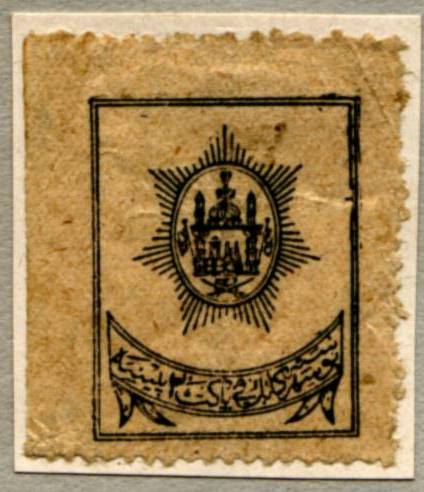Photos of Peshawar and the Khyber Pass taken by Anthony Maw on 27 August 2007, showing the remains of the Khyber railway.
External Links
History of aviation in Afghanistan
It was decided to move the aircraft to Kabul by elephant and to try to repair it.
Lennart Andersson has written a history of the first 30 years of aviation in Afghanistan.
The history of aviation in Afghanistan is more or less a “white spot”. The reason is undoubtedly the county’s inaccessibility, both geographically and politically. Old photos of aircraft in Afghanistan are extremely rare, finding detailed information is difficult, and consequently few publications have dealt with aviation in that country. As always, there are sources for research, however, although they may be difficult to find, and with unearthed information it is possible to outline the early history of aviation in the recently so war-torn and devastated country.
More
“The coal wagon rattles along”
I’ve been gathering some notes on coal mines in Afghanistan – I think there is something quite exciting to report soon – and then all of a sudden the BBC has this: Inside a crumbling Afghan coal mine by Quentin Sommerville, BBC News, Pul-e Khumri, northern Afghanistan.
Complete with pictures of the hand-worked narrow gauge railway.
Video of the railway in action. Keep going to the end for the tippler in action (and an abandoned tank).
More soon…!
Railway Gazette International on Afghan rail plans
Railway Gazette International on the latest Afghan rail plans:
Afghan rail strategy takes shape
[…]
The first phase would start at Sher Khan Bandar on the Tajik border, connect at Naibabad with the 1520 mm gauge line now under construction from Uzbekistan, and continue through Mazar-i-Sharif to Herat, with the possibility of a link to the Turkmemistan Railways line at Towraghondi. A branch would run from Shirbirghan via Andkhvoy to the Aqina border crossing with Turkmenistan.
[…]
A second phase would see a Chinese-backed line built from Mazar-i-Sharif to Kabul, Jalalabad and Torkham, near the Khyber Pass. The long-proposed extension of Pakistan Railways’ Chaman line to Kandahar is also planned.
Source: Railway Gazette International, 2010-06-28
Khojak Tunnel construction photos
These rare albumen photographs by Fred Bremner show Sindh and Baluchistan province in 1889. They are among the earliest known photographs of the area.
Includes photos of the construction of the Khojak tunnel, and a view of one of the rope inclines.
Bringing out the Great Game in all of us
Discussion of the Mazar-i-Sharif railway project at Registan. Mixing railways and Afghanistan, though, is sure to bring out the Great Game in all of us. Sigh.
Kabul railway parcel stamp
The Trains on Railway Parcel Stamps & Railway Letter Stamps of the World pages of the Aphabetilately website includes a picture of a 1923 issue of a 2 paisa railway parcel stamp from the railway to Darulaman. A paisa was a subbdivison of the Afghan rupee used in the 1920s.
The stamp is described as “small quantity issued, no used copies seen”, citing page 29 of Patterson, presumably Afghanistan: Its Twentieth Century Postal Issues by Frank E Patterson III (New York; The Collectors Club, 1964).
The logo is the national emblem of Afghanistan, first used during the reign of King Amanullah and now in the centre of the current national flag. It shows a mosque, with the mihrab (the niche indicating the direction of Mecca) and a minbar (pulpit), with a royal shako (hat) above. The rays forming eight points were inspired by the 19th century Ottoman Imperial standards, and the shape changed from a circle to an oval in 1921, according to the Afghanistan 1919-1928 section of the Flags Of The World website.
Hayratan railway ribbon-cutting and construction works
Photographs from the American Embassy in Kabul, which has a Flickr site with lots more pictures of the Hairatan Rail Line Ribbon Cutting Ceremony on May 25.
Article on Balkh governor Atta Muhammad Noor
In Afghanistan’s North, Ex-Warlord Offers Security
By CARLOTTA GALL
[…]
In Hairatan, a shabby river port on the northern border with Uzbekistan, brand new fuel storage tanks and a new railway line, Afghanistan’s first, are spreading out amid the desert scrub.Source: New York Times, 2010-05-17
Hayratan freight terminal
Army Strong Stories has some comments from Major Chris LeCron on the “neat article from Bloomberg News” about the Hairaton – Mazar-i-Sharif railway project.
When we were there [at the Friendship Bridge], the rail line stopped about a mile down the road south into Hairiton. Containers were downloaded off the rail cars by forklift or RTCH (rough terrain container handler, pronounced rech like throw-up). Once downloaded, they are shipped by truck.



